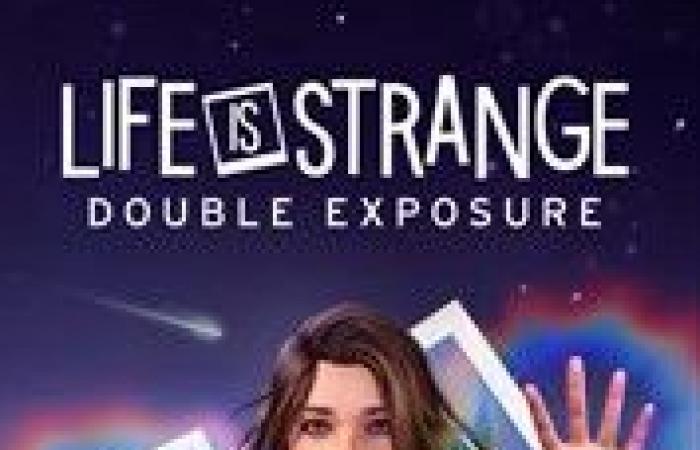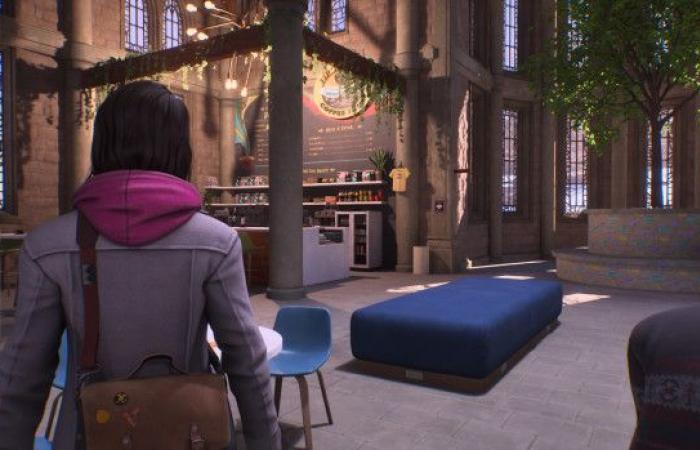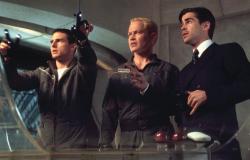With four episodes on the clock since the release of the first episode in 2015, the Life is Strange saga returns this year with a new episode developed by Deck Nine, the studio to which we owe the previous one, True Colors, but also the prequel to first episode, Before the Storm. We therefore find ourselves on conquered territory with Double Exposure which, in addition, brings back to the forefront one of the most iconic characters of the series, Maxine Caulfield. A daring bet, that goes without saying, but a successful bet, certainly.
Let it be said, in the hearts of players, the first Life is Strange will have undeniably marked those who have played through it in its entirety. And for good reason, beyond an exciting story, the title offered us the opportunity to meet and control unforgettable characters such as Maxine Caulfield and Chloé Price. Both are at the heart of a plot that it is strongly recommended to know before embarking on the new episode, Life is Strange: Double Exposure. Indeed, the beginning of this new game asks us to make a choice, which corresponds to one of the two endings of the original game. Beyond that, numerous references are made to the events that took place at Aracadia Bay, and having knowledge of the initial story is therefore a real plus that is important not to neglect.
In Double Exposure, Maxine Caulfield returns to her heroine costume, for our greatest pleasure. A choice by the studio which involves certain risks, in particular by bringing back to the forefront a character who is part of a work that can legitimately be defined as cult. Change of scenery for Double Exposure: Max is located in Caledonan arts and sciences university located in Vermont, United States. There, she held a teaching position (in photography, obviously), which allowed her to meet a lot of students, but also more or less friendly colleagues. It is in this context that tragic events will take place, plunging our young heroine into a most complex investigation. Clues to look for, suspects to question, places to search… the story is gripping and perfectly mastered. This is all the more true since each end of chapter (five in total) gives rise to a high-flying cliffhanger who gives us furiously want to discover the rest of the story. A real treatespecially for a game that relies almost exclusively on narration.
And if the scenario concocted by the studio is not a sufficient argument, know that you can also count, once again, on the presence of worked characters. The latter are all different and offer strong characters, coupled with varied styles that suit them perfectly. We love the long discussions and exchanges that take place during the meetings. Encounters which are necessarily very numerous and which allow you to learn a little more about the background of the characters. We can only advise you to take the time to chat with everyone you meet.
Time is also a terribly important aspect of a title like Life is Strange: Double Exposure. If the scenario proves fascinating and the characters interesting, we must recognize that the game sports a slow pace that may not please everyone. To put it simply, during your travels or your investigations, you have the opportunity to search the environments to read documents, find photographs, start discussions… there are a lot of things to do, but nothing is mandatory. You can move directly towards your objective, but you will miss a whole series of elements that flesh out the story and give it substance. So it would be a real shame. That being said, these moments of wandering have a price: the dilution of history and the pace which slows down. You just have to know where you’re going and accept the fact that breaks exist in Life is Strange. There are also moments of contemplation where the music starts and where we can observe different scenes which highlight the characters present, but also the places in which we find ourselves. A real treat, for a production capable of offering a poetic moment and a break in time. Something far too rare in current video games that only titles such as Life is Strange still offer us.
With storytelling as the most important aspect of the game, studio Deck Nine had to offer sufficiently interesting gameplay to players. To achieve this, the studio offers us a relatively simple experience where we move Max, while interacting with the characters and the environment. Obviously, as in the first episode, our heroine can also count on his temporal powers to brighten it all. That being said, there is a small difference with the first episode since there are more of them. We will obviously avoid talking about it here at the risk of spoiling the surprise for you, but know that there are various situations which are particularly unexpected. That being said, beyond their use, it must be recognized that the gameplay is reduced to nothing. Life is Strange: Double Exposure presents itself more as an interactive film, in the style of Supermassive Games titles. So let’s not hope for a clear evolution or even a revolution, the interest of the game lies elsewhere, as you will have understood. The story is the real interest of the title and you have to be willing to make sacrifices to be able to fully appreciate it.

On the technical levelLife is Strange: Double Exposure is practically perfect. The Deck Nine studio offers us an impeccable copy where only a few flickers and a little clipping (elements which appear with a delay) disturb us. In addition, during our test, on Xbox Series X, we did not encounter the slightest problem or bug. Excellent news which allows us to perfectly appreciate the game. On the artistic direction side, the title from the American studio takes us to the heart of winter, and more precisely to the center of Caledon University. The environments are pretty to see and the whole thing holds up perfectly. Same story with the characters and facial animations. These are very expressivewhich perfectly serves the story and the immersion offered to players. Very good points for a title of this scale.
This is all the more true since the visual appearance is truly convincing. We are not looking at something particularly realistic here, but rather at a “lightly drawn” rendering. An appreciable choice that suits the game and the atmosphere that emerges perfectly. An atmosphere which also materializes in the musical part of the game. In a Life is Strange game, music plays a particularly important role. We therefore find pieces carefully chosen by the developers which give the scenes even greater narrative force. And, once again, as with previous episodes, the magic happens. The studio has the gift of selecting relevant and extremely effective pieces. We appreciate, we even adore, and we salute once again this game which highlights Art, with a capital “A” more than deserved.








